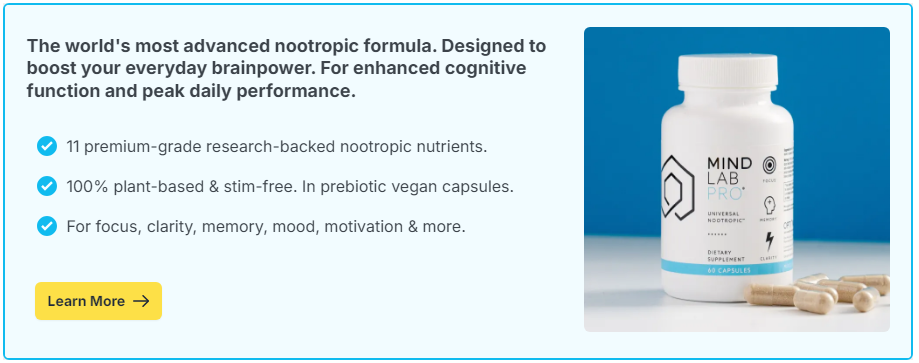
Think about a complex idea — like explaining quantum mechanics, organizing a project, or recounting a vivid memory.
Your brain somehow folds these sprawling, chaotic elements into neat, accessible packages.
This natural ability to compress information, to fold thoughts into compact mental structures, is what we might call mental origami.
And it’s one of the brain’s most elegant — and essential — tricks for surviving, thinking, creating, and learning in a world of overwhelming complexity.
Understanding how the mind “folds” information reveals powerful techniques for boosting creativity, deepening memory, and enhancing cognitive performance.
Contents
- What Is Mental Origami?
- The Neuroscience of Cognitive Compression
- Everyday Examples of Mental Folding
- How Cognitive Compression Enhances Creativity
- Brain Supplements: Supporting Memory Integration and Cognitive Efficiency
- How to Strengthen Your Mental Origami Skills
- When Cognitive Compression Goes Too Far
- Real-World Examples: Masters of Mental Origami
- Folding Toward Brilliance
What Is Mental Origami?
Mental origami refers to the brain’s process of collapsing large, complex bodies of information into smaller, more manageable cognitive chunks — without losing critical structure or meaning.
Characteristics of Mental Folding
- Compression: Distilling many ideas into a single, compact representation.
- Hierarchical Structuring: Organizing information into layered categories or schemas.
- Abstraction: Representing complex patterns through simpler, symbolic forms.
- Contextual Flexibility: Unfolding or recombining “folded” ideas depending on the situation’s demands.
Every thought you retrieve effortlessly — from a password to a personal philosophy — owes its speed and accessibility to your brain’s artful mental folding techniques.
The Neuroscience of Cognitive Compression
Several brain systems collaborate to compress and manage thought structures efficiently.
Key Systems Involved
- Prefrontal Cortex: Manages abstraction, prioritization, and mental organization.
- Hippocampus: Links and stores episodic memory fragments into coherent narratives.
- Parietal Lobes: Support chunking in mathematical, spatial, and linguistic reasoning.
- Default Mode Network (DMN): Integrates complex, self-referential ideas during daydreaming and reflection.
Rather than holding endless separate facts, your brain bundles, links, and folds them into structured mental “files” for swift retrieval and creative remixing.
Everyday Examples of Mental Folding
You engage in mental origami more often than you realize — across countless domains of daily life.
Common Instances
- Language Learning: Grouping verb conjugations or idiomatic phrases into manageable patterns.
- Navigation: Creating mental maps of your neighborhood instead of remembering every street individually.
- Skill Mastery: Automating sequences (like a golf swing or piano passage) into single cognitive units.
- Social Judgments: Forming compressed impressions of people (rightly or wrongly) based on selective cues.
Without mental compression, even brushing your teeth or making a grocery list would require exhaustive, slow, energy-sapping thought.
How Cognitive Compression Enhances Creativity
Far from limiting originality, mental folding often fuels it by allowing the mind to handle greater complexity and make new, unexpected connections.
Creative Benefits
- Idea Recombination: Folded concepts can be rapidly unfolded and recombined in novel ways.
- Pattern Recognition: Seeing underlying structures between seemingly unrelated ideas sparks innovation.
- Problem Framing: Compressing complex issues into elegant models or metaphors makes them more solvable.
When Picasso said, “Art is the lie that enables us to realize the truth,” he was speaking the language of mental origami — simplifying to see more deeply.
Brain Supplements: Supporting Memory Integration and Cognitive Efficiency
Some individuals enhance cognitive compression and retrieval skills with nootropic supplements designed to support memory integration, neuroplasticity, and executive function.
Ingredients such as citicoline, lion’s mane mushroom, and bacopa monnieri are studied for their potential to optimize neural connectivity and information management — key allies for sharper, more flexible mental folding.
Professional consultation ensures safe and tailored supplementation strategies.
How to Strengthen Your Mental Origami Skills
Like physical origami, mental folding is an art — one that can be refined with deliberate practice and strategic habits.
Techniques for Cognitive Folding
- Chunk Information: Group related facts, ideas, or skills into small, manageable units instead of isolated bits.
- Create Mental Maps: Visually organize concepts into diagrams, flowcharts, or mind maps to see hierarchical structures.
- Use Metaphors and Analogies: Summarize complex ideas through vivid, symbolic language that links to prior knowledge.
- Regularly Review and Refold: Update and refine your mental packages as you learn more, maintaining flexibility and relevance.
- Practice Compression Exercises: Summarize articles, books, or lectures in three sentences or one vivid image.
Mastering mental origami means balancing precision with pliability — folding tightly without losing the ability to unfold and explore.
When Cognitive Compression Goes Too Far
While mental folding increases efficiency, excessive or premature compression can also create cognitive blind spots.
Risks of Over-Compression
- Oversimplification: Ignoring important nuances or complexities in favor of a tidy narrative.
- Stereotyping: Forming rigid categories that overlook individuality or diversity.
- Loss of Creative Divergence: Becoming locked into familiar patterns, limiting imaginative flexibility.
Like any tool, mental compression must be applied thoughtfully — knowing when to fold and when to leave thoughts beautifully messy and expansive.
Real-World Examples: Masters of Mental Origami
Many of history’s greatest thinkers intuitively practiced and refined the art of cognitive folding — and leveraged it for transformative innovation.
Examples
- Leonardo da Vinci: Fused anatomy, mechanics, and painting through layered, interconnected thought structures.
- Richard Feynman: Famous for explaining complex physics through simple, elegant mental models accessible even to non-experts.
- Marie Curie: Mastered the ability to compress vast experimental data into focused, actionable scientific breakthroughs.
Masterful minds don’t just accumulate knowledge.
They fold, shape, and reframe it — endlessly.
Folding Toward Brilliance
Your mind is already an origami artist — folding memories, insights, and dreams into elegant cognitive shapes.
By understanding and honing this natural artistry, you can think more clearly, remember more vividly, and create more boldly.
Fold with care.
Unfold with curiosity.
And let your thoughts dance in the ever-shifting geometry of discovery.

